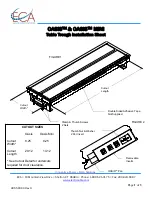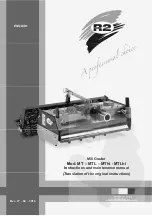
PremAire
®
Cadet Escape
Open-Circuit, Pressure-Demand, Escape,
Self-Contained Breathing Apparatus or Combination,
Open-Circuit, Pressure-Demand, Escape, Self-Contained
Breathing Apparatus and Type C, Supplied-Air
Respirator
OPERATION AND INSTRUCTIONS
This respirator is certified by the National Institute of Occupational Safety and
Health (NIOSH).
The warranties made by MSA with respect to the product are voided if the product
is not installed, used and serviced in accordance with the instructions in this manu-
al. Please protect yourself and your employees by following the instructions. Please
read and observe the WARNINGS and CAUTIONS inside. For additional information
relative to use or repair call 1-800-MSA-2222 during regular working hours.
TAL 903 (L) Rev. 1
© MSA 2009
Prnt. Spec. 10000005389(A)
Mat. 10063148
Doc. 10063148
This manual must be carefully read and followed by all persons who have or will
have the responsibility for using or servicing this respirator. This respirator will
perform as designed only if used and service according to the instructions; oth-
erwise it could fail to perform as designed and persons who rely on the respi-
rator could sustain serious personal injury or death.


































